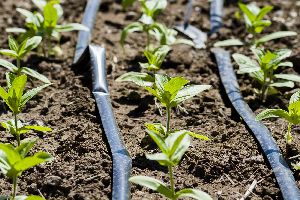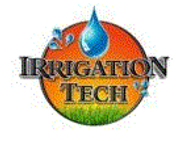
Irrigation has been a part of human history since 6000 BCE. As humankind experimented with agriculture, we developed primitive sprinkler systems to aid ourselves in growing plants for food and other purposes. Since then, we have reworked and reinvented the process, creating a modern development that gathers and disperses water as needed. This process is vital to modern society, and lawn irrigation systems are responsible for watering millions of properties throughout the United States.
How Did Irrigation Start?

Basic and advanced irrigation systems serve the same purpose; they redirect water flow to areas that naturally don't receive nourishment, allowing plants to grow. The process has been refined with advancements in water flow control, including the inventions of modern reservoirs and pressure gages. Reservoirs collect water from natural sources, such as rainwater runoff, and pump it into irrigation lines. These irrigation lines have pressure gages that release water in controlled amounts.
What Are Some Irrigation System Types?
There are many different types of irrigation systems. Many of these offer individual benefits that help lawns thrive. Some common types are:
- Furrow or Surface Irrigation: These parallel water trenches lie between rows of crops. Water runs through the trough, slowly watering all the plants between the irrigation lines.
- Sprinkler Irrigation: This single pipeline is outfitted with towers that move and release water on surrounding plants like a sprinkler. This is the most common lawn irrigation system in the United States.
- Solid Set Irrigation: These are below-ground pipelines with sprinkler nozzles that spray surrounding plants.
- Localized Irrigation: Water is distributed through pipelines to provide low-pressure irrigation to plants.
- Drip Irrigation: This is a form of localized irrigation, but water is delivered near plants instead of directly on them.
- Sub-irrigation: In areas with low sea levels, water is pumped from aqueducts using pumping stations.
What Benefits Do Modern Irrigation Systems Offer?
Human innovation in modern irrigation methods has many benefits that weren't seen in primitive systems. Complex systems give us more control over the size and speed of the irrigation process. Pumping stations with pressure gages release specific amounts of water at high or low pressure to plants in exact intervals, as determined by the person controlling the system. This produces a higher yield of higher quality crops, extending the growing season and maximizing the harvest. Natural droughts and food shortages are no longer a concern in modernized societies with dependable watering systems.
If you're worried about the winter's impact on your lawn irrigation system, Irrigation Tech provides troubleshooting, repair, and upgrade services throughout Rochester, NY, and the surrounding counties. These sprinkler system contractors are fully certified and re-educated yearly and have been chosen by the Irrigation Association twice in their list of Top 100 Contractors in the country. Learn more about why Irrigation Tech is favored by hundreds of homeowners on their website, or call their office number at (585) 225-0380 with any questions or service requests.
About the Business
Have a question? Ask the experts!
Send your question

